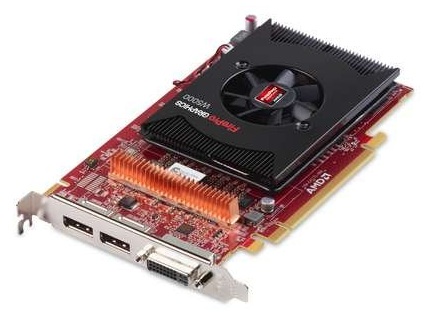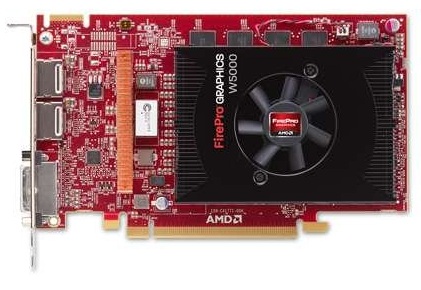AMD FirePro W5000 Professional Graphics Card Review
User Experience and Conclusion
The final bit of testing for AMD’s FirePro W5000 is the most important. Benchmarks only tell you half the story. What really matters when it comes to professional graphics solutions is software support. After all, these solutions are expensive and if they don’t deliver when they should its extremely problematic. Therefore we tested the AMD FirePro W5000 and Radeon HD 7970 in a typical 3D workflow. We started by creating a base mesh in Autodesk Maya 8.5, 2009, and 2012 in order to test compatibility across multiple versions of the software. From there we did some UV unwrapping so texturing could be started. After all that was accomplished, we exported the mesh for use in Autodesk’s Mudbox 2013 where a high res sculpt was done on the base mesh. After which the final mesh had its subdivision level reset to zero and we exported it again. After doing so, the final normal, ambient occlusion and displacement maps are generated and brought into Autodesk Maya 2012. We applied the maps to the base mesh we exported and followed it up with further tweaking until we were satisfied. Through this process we really get to see if the AMD FirePro W5000 offered a better user experience over the consumer oriented Radeon line, and let me tell you it is a night and day difference.

We had zero issues in all versions of Autodesk Maya that we used for testing this past month. It was also easy to see an improvement in work flow as the time to get a project moving and getting certain aspects done was easier and faster due to how much more responsive the FirePro W5000 was in comparison to the Radeon HD 7970. That said, up until a few months ago the Radeon HD 7970 we use as the regular GPU in this system was slow and cumbersome with extremely bad performance. Driver revisions have corrected this issue to an extent for the Radeon GPU, but performance is still far below that of the FirePro solution, which really shows how much drivers and support can improve performance and a persons workflow. The change when unwrapping UVs for texturing for example was just far smoother on the FirePro with the selection of UVs having no noticeable lag compared to the Radeons.
One thing we do have to mention however is that after exporting our mesh from Autodesk Maya 2012 and bringing it into Mudbox for sculpting out normal maps, we noticed that on the Radeon HD 7970 ambient occlusion did not function as intended in the viewport, but this would be considered a minor issue. The said, the FirePro W5000 on the other hand had no issues rendering ambient occlusion in the viewport. Other than the extra viewport render options functioning better on the FirePro W5000, both cards performed nearly identically when it came to sculpting a high-res mesh for normal map generation. All in all, our experience with the AMD FirePro W5000 was a positive one, with it performing admirably in all tests.

Overall, from a user perspective the FirePro W5000 really offers the better user experience when trying to get work done with professional applications. Not only that, but the 3 year warranty along with the ability to get driver fixes for issues far more rapidly is where the value of this product comes in. The fact all our software today worked flawlessly with the FirePro W5000 is impressive to say the least and this is huge, as many companies do not upgrade to the latest and greatest. This is because custom tools are hard to replace and when software changes custom tools must be recoded on occasion to work properly. The fact the FirePro W5000 from AMD performed so well in old and new applications, as well as its attractive street price of just $448 shipped, it truly is an outstanding value in the professional graphics market.
Legit Bottom Line: If youre looking to improve workflow speed as well as performance in your professional applications, but don’t want to break the bank, check out the AMD FirePro W5000.

Comments are closed.